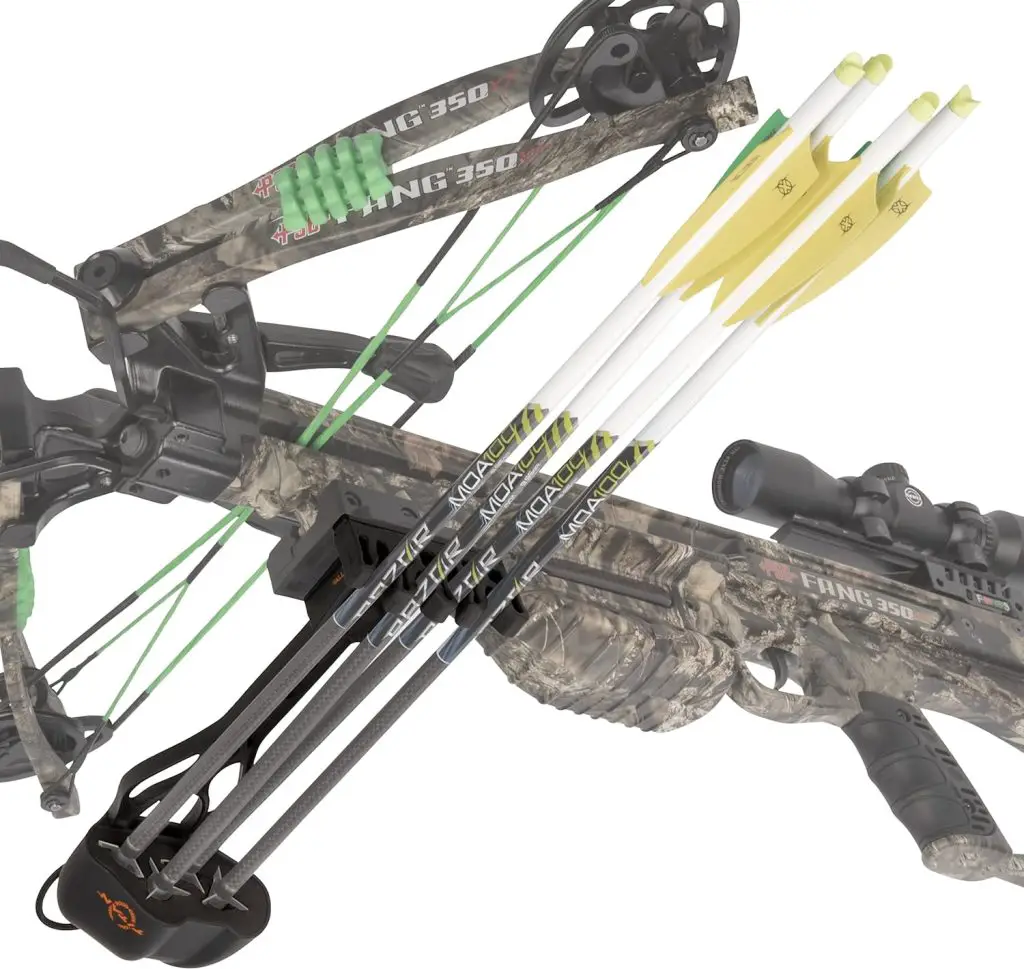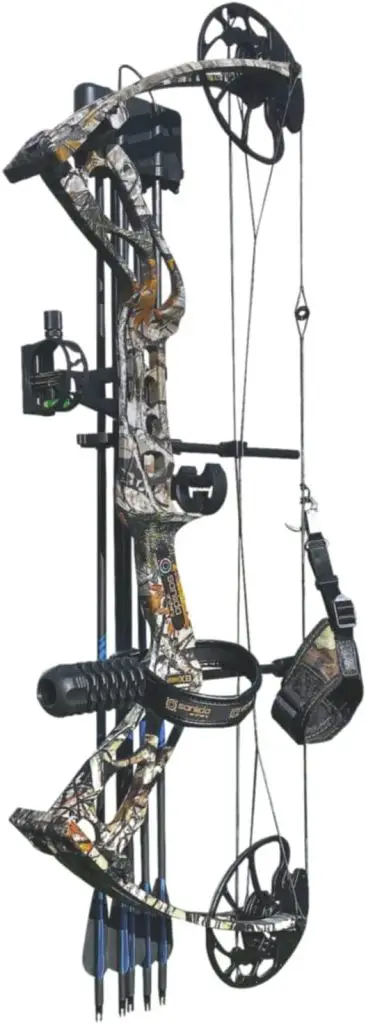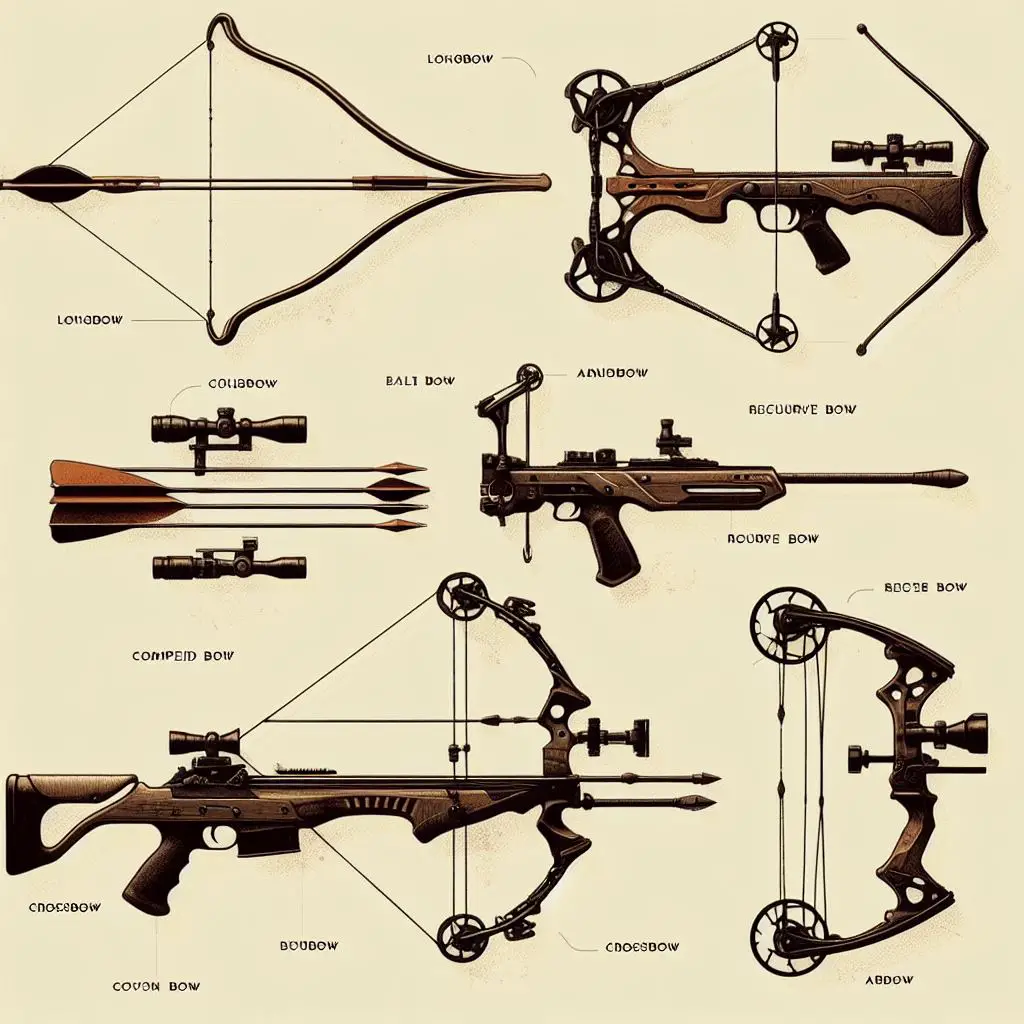For centuries, archers have employed bows and arrows for hunting and warfare. The three main types used today are traditional vertical bows, compound bows, and crossbows. While their core function is similar, each has distinguishing characteristics that set it apart from the others.
Crossbows, in particular, have some unique attributes compared to vertical bows. What exactly differentiates a crossbow mechanically and how does this impact performance and use?
In this in-depth guide, we’ll highlight what sets the crossbow design apart from vertical bows and compounds. We’ll cover differences in:
- Power and Launch Velocity
- Draw Weight, Trigger, and Release
- Accuracy and Effective Range
- Loading and Reloading
- Safety and Ease of Use
- Hunting Advantages
- Customization and Accessories
- Styles and Popular Models
- Legality and Restrictions
By the end of this comprehensive comparison, you’ll understand the specialized merits that make the crossbow stand out as more than just a horizontally mounted bow.
Table of Contents
- Intro to Bows and Crossbows
- Power and Arrow Speed
- Draw Weight and Trigger Mechanics
- Accuracy and Effective Range
- Loading and Reloading Comparison
- Safety and Legal Considerations
- Hunting Applications
- Customization and Accessories
- Crossbow Styles and Top Models
- Conclusion
Introduction to Bows and Crossbows
First, let’s briefly introduce the major bow types relevant to this discussion:
Vertical Bows

- Longbows and recurve bows where the limbs curve away from the archer when held vertically.
- No sights or trigger. Drawn, held, and aimed manually by the archer.
Compound Bows

- Constructed with pulleys and stiff limbs for mechanical advantage when drawing
- Let-off allows limited hold at full draw. Aiming done by archer.
Crossbows

- Short horizontally mounted bow with a rifle-like stock.
- Drawn with a crank or cocking device. Fired via trigger. Includes a sight.
While all three launch arrows via bow-like limbs and a string, crossbows operate and perform quite differently as we will see.
Power and Launch Velocity
A key characteristic setting crossbows apart is power…
Vertical Bow Power
- Force limited by archer’s draw strength and technique
- Arrow velocity from 100 to 200 fps typically
Compound Bow Power
- Draw modified by cams/pulleys for let-off at full draw
- Achieves moderate arrow speeds from 200 to 350 fps
Crossbow Power
- Uses leverage and a winding crank to independently draw
- No human draw strength limit
- High arrow velocity between 300 and 500 fps
This ability to achieve high draw weights over 1000 lbs independent of human limits gives crossbows unmatched power for such compact weapons. The high arrow speeds rival traditional firearms ballistics.
Let’s look more at the draw weight and trigger mechanisms enabling this…
Draw Weight and Trigger Design
A crossbow employs specialized mechanics for drawing and firing…
Vertical and Compound Bow Draw
- Archer manually pulls and holds draw weight to aim
- Draw weight limited by archer capability
Crossbow Draw
- Cocked using a crank/winch to pull string back mechanically
- Safely holds up to 2000+ lb draw weights
Vertical and Compound Release
- Fired by archer releasing drawn string by hand
- Inconsistent release degrades accuracy
Crossbow Trigger Release
- Finger trigger releases string for precision consistency
- Allows aim and shot process independent of draw
This separation of drawing from firing provides key advantages for power and accuracy.
Crossbow draw weights far exceed human capabilities. And the trigger enables aiming detached from the effort of holding full draw. This delivers superior downrange results at longer ranges.
Accuracy and Effective Range
Here is where the advantages really shine…
Vertical Bow Accuracy
- Limited consistency due to manual draw and release
- Average accuracy around 25 yard effective range
Compound Bow Accuracy
- Let-off helps steady aim for better consistency
- Effective to 40 yards in skilled archers’ hands
Crossbow Accuracy
- Up to moa accuracy from precision triggers and scopes
- Effective range out to 100+ yards
The ability to crank-cock high draw weights combined with unmatched trigger control makes properly scoped crossbows amazingly precise.
Groups of 2-3 inches at 100 yards are possible, rivaling firearms. No other archery design can match this downrange consistency and extended effective range on targets.
But ease of loading and reloading must also be considered…
Loading and Reloading Comparison
High crossbow performance does come at the cost of greater reloading complexity…
Vertical Bow Loading
- Arrow loaded directly by hand
- Allows rapid reloading and shooting
Compound Bow Loading
- Arrow clicks directly into rest and draws smoothly
- Relatively quick and easy to reload and re-draw
Crossbow Loading
- Arrow must be laid in rail and secured
- Cranking required between each shot
- Slow to reload and recharge
This is a tradeoff for the power. While accurate, crossbows cannot match the rate of fire of skilled archers with recurves and compounds.
Let’s look at how this impacts their use for hunting versus sport…
Hunting Applications
Crossbow capabilities lend themselves nicely to hunting use:
Vertical and Compound Bow Hunting
- Excellent for moving game requiring quick multiple shots
- Quiet and lethal in skilled archers’ hands
Crossbow Hunting
- Not ideal for running shots due to slow reload
- Excel at stationary ambush from blinds where power matters
- Extend ethical range on game
The accuracy and power of crossbows make them ideal for tree stand hunting of deer, bear, and large game that often requires longer precise shots. Their minimal noise and ability to stay cocked also aid in ambushing game.
But power requires extra safety considerations as well…
Safety and Legal Considerations
The extreme power and long range of crossbows require caution and often legal restrictions…
Vertical Bow Safety
- Limited draw weight reduces injury risks
- Considered archery equipment with minimal regulations
Compound Bow Safety
- Higher draw weights increase risk if mishandled
- Some locations regulate draw weights
Crossbow Safety
- Risk of serious injury if triggered accidentally
- Often classified alongside firearms with usage regulations
- May be prohibited for hunting or require permits
While major advantages for hunting, crossbows greater power means special care and legal oversight are necessary. Ensure you understand and follow all regulations for transport and use in your location.
Now let’s move on to accessories and customization options…
Customization and Accessories
Crossbows allow a range of personalized setups:
- Scopes – 1x or variable power to enhance aim
- Mounts – Attached to rail for optimal eye alignment
- Cocking Aids – Winches and crancking levers for easy draw
- Noise Dampeners – Silencing kits to reduce vibration and noise
- Illuminated Scopes – Low light aiming capability
- Slings – Makes carrying easy over long distances
- Cases – Protect the bow during transport
- Arrows – Match weight and length to the crossbow
Properly equipping your crossbow is essential to harnessing its downrange capabilities for your intended use. Don’t try to cut costs here.
Speaking of costs, let’s look at budgets…
Cost Considerations
Crossbows have a wide range of price points:
- Entry-level – $200 to $500
- Mid-range – $600 to $1000
- High-end – $1500+
Spending more brings better optics, accuracy, reduced vibration and noise, and enhanced fit and finish.
Consider paying up for a high quality model if you plan to hunt larger game. Cheap crossbows can frustrate on important shots.
Now let’s move on to the major styles and popular models on the market today…
Crossbow Styles and Popular Models
There are two main crossbow designs:
Recurve Crossbows
- Traditional design with curved tips on shorter power limbs
- Narrower “non-split” limb configuration
- Favored for lighter weight and compactness
Compound Crossbows
- Utilize cams and cables like compound bows
- Wider “split” limb design for max power
- Higher arrow speeds but heavier overall
Here are some top-selling crossbows in each style:
Top Recurve Models
- Barnett Recruit – Affordable entry-level bow
- TenPoint Turbo M1 – Lightweight just over 6 lbs
- Carbon Express Intercept -Aluminum rail for accuracy
- Wicked Ridge Invader – A great budget ambush hunting option
Top Compound Models
- Barnett Whitetail Hunter – Smooth draw cycling
- TenPoint Wicked Ridge RDX – 400+ fps velocity
- Killer Instinct Speed – 425 – Ultra fast and powerful
- Ravin R20 – Compact sniper-like accuracy
- CenterPoint Sniper 370 – Budget friendly high performance
With so many options, it’s best to get hands-on with different crossbows to evaluate weight, ergonomics, accessories, and feel. An ideal match for your purposes is important.
Finally, let’s conclude with some key takeaways…
Conclusion
While crossbows utilize bow limbs for propulsion, they truly are a breed apart from other bow designs:
- Extreme power from cocking separate from shooting
- Superior downrange accuracy and effective range
- Sights and triggers for precision shooting
- Slow to reload but optimal for ambush hunting
- Require extra care and legal considerations
So while similarities exist with traditional bows, the crossbow excels in specialized roles where its unique attributes matter most.
For hunters, the crossbow extends your ethical range on game significantly compared to vertical and compound bows. More humane harvest shots are possible even out to 100 yards in the hands of skilled marksman.
The crossbow allows those with limited strength to enjoy archery via its cocking mechanism. And with practice, it can achieve excellent accuracy for target shooting as well.
So while not ideal for rapid fire sport archery, crossbows carve out a unique niche in hunting and target shooting arenas. Their bridging of archery and firearms gives crossbow enthusiasts the best of both worlds when used properly and safely.
Give crossbowing a try if you haven’t – you may find it provides just the capabilities you’ve been looking for in a hunting or recreational archery tool.

